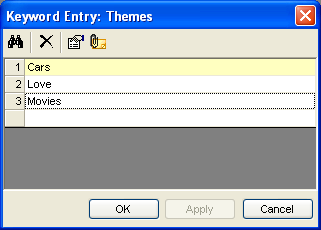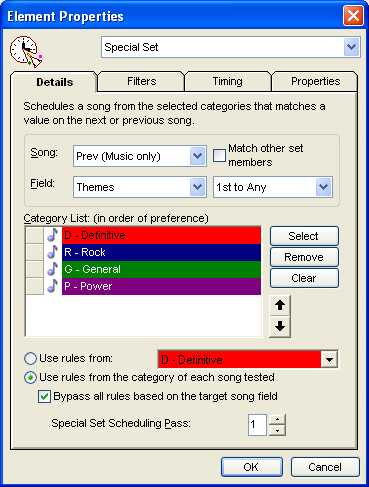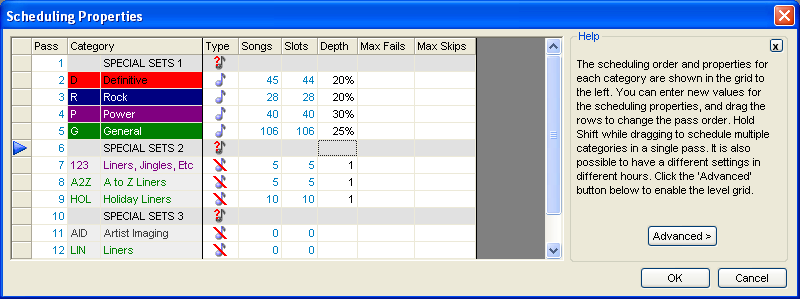MusicMaster Blog
Scheduling by Theme posted on October 10th, 2011
by Paul Ziino
Whether you want to schedule a bunch of “car” songs leading up to the Indy 500 or “patriotic” songs for Independence Day, Theme Scheduling can get the job done. Here’s how in 10 easy steps…
1. First, add the appropriate theme to all matching songs in a Multi-Keyword field, likely labeled as Themes. If more than one theme applies to a certain song, make sure to list each theme on its own line in the Keyword Entry box.

2. Next, create a new song card and place it in a category that you do not schedule. This song card should have 0:00 runtime, a Title of “Theme=Cars” for example, and only that keyword in the Themes field. This song card will serve as your “kickoff” for the theme block.

3. In your clock, schedule a forced position of that theme-specific song card, and on the position’s Properties tab, check “Hide from Log Export” so that it doesn’t confuse your automation system.
4. Follow that forced position with a Special Set position set to look at Previous Music only, with a target field of Themes, and an operator of “1st to Any”. This tells MusicMaster that the first keyword on the position we’re matching (the kickoff position) must be present as any one keyword in the target field on the song scheduled in the special set position. So if the song being considered for this Special Set position has Love, Cars, and Movies listed as themes, it will be eligible for your Cars theme block.
5. Click the Select button in the Category List to choose the categories from which this special set position can be scheduled. Once they are selected, you can click and drag them into a unique order. For example, in your first special set position you may want it to look in A, then B, then C, then D. But in the next one you may want it to look in C, then D, then B, then A. The order in which the categories are listed is the order in which MusicMaster will search for a song to fill that position.
6. You’ll want to use the rules from the category of each song tested and bypass the rules of the target song field. This way the song scheduled in the special set position still has to abide by Artist Separation, Minimum Rest, Hour Rotation, and all other rules…except any rules you have in place for the Themes field.
7. Also, set your Special Set Scheduling Pass to 1 if you’re not doing any other special sets in this clock (artist intros, two-fers). If you are, then set to 2 or 3 accordingly. When complete, your Element Properties will look like this…

8. Repeat steps 3-7 for each themed position you want in the clock.
9. Now go to Dataset/Schedule/Schedule Properties and make sure that Special Set 1 (or 2 or 3, whichever applies) is at the top of your pass order. This tells MusicMaster to schedule them first, and then fill in all other positions around your themed positions.

10. When you launch the automatic scheduler, make sure the appropriate special sets are checked beneath the category selection box so that MusicMaster knows to auto-schedule those items.
If you have any questions on theme scheduling, or if you need a field added to your database to accommodate your themes, contact your Music Scheduling Consultant…they’re here to help!
